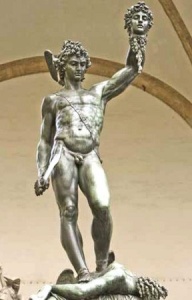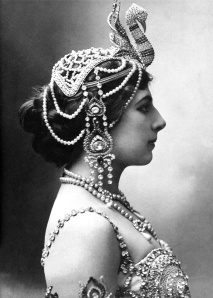“The queen of queens”
Cleopatra was born in 69 BC at Alexandria of Egypt. Her father was pharaoh Photolomy XII. She lived in a period of time that saw the creation and expansion of the Roman Empire. Her history was told century after century by historians and in our days by Hollywood. The most known version of the story of her life is the one of Plutarch. He speaks of a beautiful and dangerous (for Rome) queen who put the Roman Empire to her knees by seducing, first one of the most powerful man of history, Julius Caesar, and then one of his strongest lieutenant Marc Antony.
Now we have to remember that the story of Cleopatra has been written by her roman contemporaries, that were also her enemies, while everything written from the Egyptians during her reign has been lost. In fact Cleopatra’s Alexandria is at the moment under the Mediterrenian seas. On the other hand the Arab historians who lived after her death, instead, paint a very different portrait from the Roman one.
They tell of a wise queen who liked to read and foster cultural and artistic progress. In the Arab stories one cannot find any mention to her physical appearance. In absence of any direct Egyptian source ( we don’t even have a certain portrait or a statue of her) is difficult to separate the fiction from the reality that ‘s why Cleopatra is probably become a legend.

The facts are: she belonged to a Greek lineage of pharaohs who came to rule Egypt after the conquest of the country of Alexander the Great in the IV century BC. These Greek pharaohs adopted Egyptian costumes and in particular the cult of life after death and the cult of the pharaoh representing the divinity on Earth. But not all of the Greek Pharaohs adopted for example the Egyptian language and during their reigns revolts busted the region. Cleopatra tried to stay closer to the population by adopting their language, fighting the corruption, protect the commercial exchanges with the Arabs on the caravan route, that went from the Nile to the Red Sea, and, as said above, by fostering the Arts. For example she rebuilt the Alexandria Library that was the biggest in the world before a fire destroyed it and she was the first to exploit a porphyry quarry to embellish her palace. The same stone was to be used in the following years by the Romans for their statues.
She became queen at the age of 18. At the time Rome was conquering country after country. At the age of 21 she started a relationship with the Roman chief Julius Caesar.
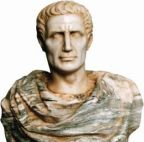 We don’t know if her choice was based on love or ambition. The point is that she had a child from Caesar to whom she gave a roman name Caesarion. Julius Caesar didn’t recognize the child but brought him and Cleopatra to Rome reserving them the highest honors. The reason why Caesar didn’t recognize Caesarion is unknown but we can imagine that Rome was a dangerous place for the baby as many were against the union between Cleopatra and Caesar fearing the end of the Republic and the beginning of a monarchy. Actually Caesar was killed in 44 B.C. and Cleopatra fled to Egypt. She continued to see her son as the heir of Egypt and Rome together as testified by the inscriptions on the Dendera temple that she has it built to show Caesarion as the future governor of the reign.
We don’t know if her choice was based on love or ambition. The point is that she had a child from Caesar to whom she gave a roman name Caesarion. Julius Caesar didn’t recognize the child but brought him and Cleopatra to Rome reserving them the highest honors. The reason why Caesar didn’t recognize Caesarion is unknown but we can imagine that Rome was a dangerous place for the baby as many were against the union between Cleopatra and Caesar fearing the end of the Republic and the beginning of a monarchy. Actually Caesar was killed in 44 B.C. and Cleopatra fled to Egypt. She continued to see her son as the heir of Egypt and Rome together as testified by the inscriptions on the Dendera temple that she has it built to show Caesarion as the future governor of the reign.
In the meanwhile the Roman Empire was split in two parts. The West under Octavian the nephew of Caesar who declared himself the true heir of the dead chief. The East was under Marc Antony lieutenant of Caesar who supported the son of Cleopatra as heir of his former general.
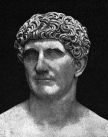 Cleopatra entered in an alliance with Marc Antony, and also in a relationship from which were born 3 children. The couple finally was defeated next to Actium in Greece by Octavian, and they both preferred to commit suicide than to be brought to Rome as slaves.
Cleopatra entered in an alliance with Marc Antony, and also in a relationship from which were born 3 children. The couple finally was defeated next to Actium in Greece by Octavian, and they both preferred to commit suicide than to be brought to Rome as slaves.
Marc Antony decided to die in a roman way, with a sword. Cleopatra chose to die by a bite from a cobra, a sacred animal in Egypt, protector of the country and its pharaohs.
Cleopatra was a proud woman and an ambitious mother who lived and died for preserving the traditions and independence of her country through her son.
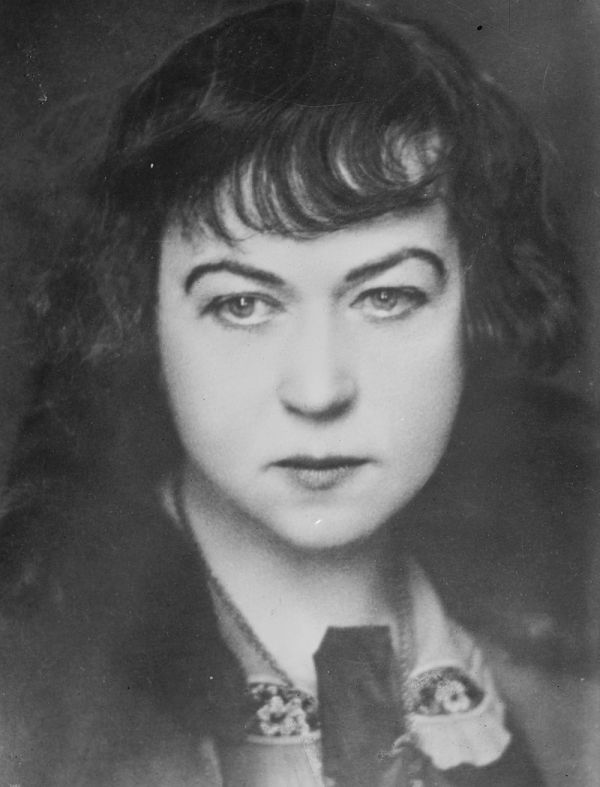

 We don’t know if her choice was based on love or ambition. The point is that she had a child from Caesar to whom she gave a roman name Caesarion. Julius Caesar didn’t recognize the child but brought him and Cleopatra to Rome reserving them the highest honors. The reason why Caesar didn’t recognize Caesarion is unknown but we can imagine that Rome was a dangerous place for the baby as many were against the union between Cleopatra and Caesar fearing the end of the Republic and the beginning of a monarchy. Actually Caesar was killed in 44 B.C. and Cleopatra fled to Egypt. She continued to see her son as the heir of Egypt and Rome together as testified by the inscriptions on the Dendera temple that she has it built to show Caesarion as the future governor of the reign.
We don’t know if her choice was based on love or ambition. The point is that she had a child from Caesar to whom she gave a roman name Caesarion. Julius Caesar didn’t recognize the child but brought him and Cleopatra to Rome reserving them the highest honors. The reason why Caesar didn’t recognize Caesarion is unknown but we can imagine that Rome was a dangerous place for the baby as many were against the union between Cleopatra and Caesar fearing the end of the Republic and the beginning of a monarchy. Actually Caesar was killed in 44 B.C. and Cleopatra fled to Egypt. She continued to see her son as the heir of Egypt and Rome together as testified by the inscriptions on the Dendera temple that she has it built to show Caesarion as the future governor of the reign.
 Cleopatra entered in an alliance with Marc Antony, and also in a relationship from which were born 3 children. The couple finally was defeated next to Actium in Greece by Octavian, and they both preferred to commit suicide than to be brought to Rome as slaves.
Cleopatra entered in an alliance with Marc Antony, and also in a relationship from which were born 3 children. The couple finally was defeated next to Actium in Greece by Octavian, and they both preferred to commit suicide than to be brought to Rome as slaves.






